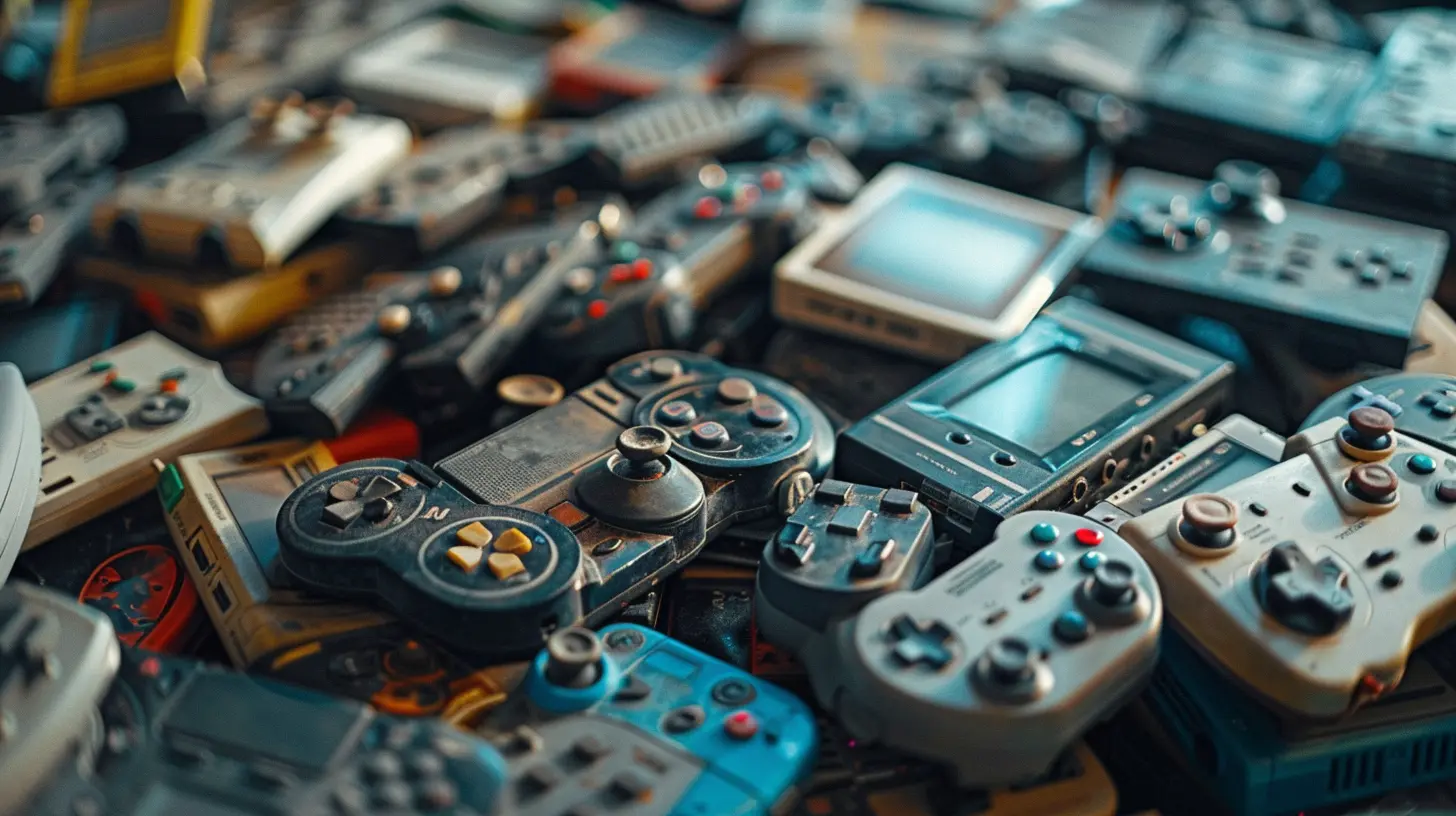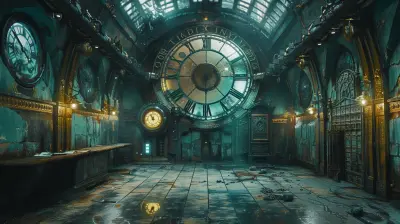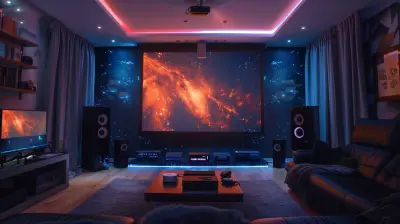The Role of Sound in Creating Unforgettable VR Game Worlds
17 June 2025
Have you ever played a game and felt like you were transported to another universe? Like you could almost smell the air, feel the sun on your skin, or hear the faint rustle of leaves in the distance? That’s the magic of Virtual Reality (VR) for you! But what truly brings this whole sensory experience to life? Sure, the visuals are breathtaking, and the gameplay mechanics are innovative, but there’s a sneaky little hero we often overlook—sound. Yes, sound! It has this incredible ability to anchor us in a world, evoke emotions, and make a game truly unforgettable.
In the realm of VR gaming, where immersion reigns supreme, sound isn’t just the cherry on top; it’s the foundation that holds the experience together. Let’s dive into how sound plays a pivotal role in crafting those jaw-dropping, goosebump-inducing VR experiences we all crave.
Why Sound is Crucial in VR Games
Imagine you're exploring an eerie haunted mansion in VR. The visuals are dark and creepy, and the shadows are perfectly placed. But… silence. No creaking floorboards, no distant howls, no whispering voices. Weird, right? Suddenly, the experience feels hollow. That’s because sound isn’t just something your ears pick up—it’s the glue that holds the whole VR world together.In VR, sound acts as a bridge between the digital and the real world. It convinces your brain that you’re inside the game, not just a spectator holding a controller. Whether it’s the swish of wind, the clinking of swords, or the rumbling bass of an explosion, sound makes the environment believable.
How Sound Enhances Immersion in VR Gaming
1. Spatial Audio: A 360-Degree Audio Hug
Let’s talk about one of VR’s biggest tricks up its sleeve: spatial audio. Ever noticed how in real life, you can tell where a sound is coming from? Like when someone calls your name from behind, and you instinctively turn? VR sound technology mimics this with spatial audio.In VR games, sound isn't just pumped into your left and right ear like traditional gaming. It surrounds you! Picture this: you're sneaking through a dense jungle in a VR adventure game. You hear rustling leaves behind you—was that a wild animal? You instinctively turn around, heart racing. That’s spatial audio working its magic. It makes the experience feel alive and keeps you on edge in the best way possible.
2. Sound as an Emotional Conductor
Sound carries emotion, plain and simple. A haunting piano melody can fill you with sorrow, while the triumphant roar of an orchestra can hype you up like nothing else. In VR, this emotional pull is dialed up to 11.For instance, in a VR horror game, that low, ominous hum that creeps in just before a jump scare? It’s the sound designers warning you—or teasing you, depending on how you look at it. On the flip side, in an epic VR quest, the swelling music when you conquer a boss adds a triumphant exclamation point to the moment. Without sound, these emotions would fall flat.
3. Interactivity and Realism
In real life, everything makes a sound. You slam a door? Bam! You crunch through snow? Crunch, crunch. VR games aim to replicate this by making the world interactive through sound. Touch something, and it responds. Walk into a tavern, and you hear glasses clinking, people laughing, and the bard strumming a lute in the corner.This kind of interactivity doesn’t just make the world feel populated; it makes it feel real. You’re not floating through a static environment—you’re an active participant. Plus, when sound reacts flawlessly to your actions, it’s deeply satisfying, like a perfectly executed high-five.
The Science of VR Sound: Why Your Brain Believes It
Here’s the cool part—your brain is kind of gullible. It doesn’t take much convincing to trick it into believing it’s inside a VR world. And sound is one of the biggest culprits behind this illusion.When you hear a sound in VR that aligns perfectly with what you see and do, your brain buys into the experience hook, line, and sinker. Psychologists call this “presence,” and it’s the Holy Grail of VR design. The better the sound design, the more present you feel in the VR world.
Challenges of Sound Design in VR
Alright, let’s not sugarcoat it—sound design in VR isn’t all rainbows and unicorns. It’s tough! Traditional sound design is like 2D painting, while VR sound design is more like sculpting in 3D space. Designers have to figure out how sounds interact with the virtual environment, how they bounce off imaginary walls, and how they change based on your position. Oh, and let’s not forget the hardware limitations. Not all VR headsets have top-notch audio systems, so designers often have to tweak their magic to make it work for everyone.Successful Examples of Sound in VR Games
Need proof of how sound can elevate VR gaming? Let’s talk about some standout examples where sound took VR experiences to the next level.1. Half-Life: Alyx
This VR masterpiece nailed sound design. From the eerie whispers in dark hallways to the clanging of metal objects in abandoned labs, every sound in the game was crafted to enhance tension and immersion. The spatial audio here? Chef’s kiss.2. Beat Saber
Sound isn’t just part of Beat Saber; it is Beat Saber. The entire gameplay revolves around slicing through blocks in time with heart-pounding music. Without sound, this VR rhythm game would lose all its charm.3. The Walking Dead: Saints & Sinners
In this survival horror game, sound plays a huge role in keeping you on edge. The groans of zombies in the distance warn you of lurking danger, while the squelch of a knife hitting its target keeps the combat visceral.The Future of VR Sound: What’s Next?
As technology continues to improve, so does VR sound design. We’re already seeing strides in AI-driven soundscapes that adapt to your actions dynamically. Imagine a VR game where the music subtly shifts based on your mood or where environmental sounds evolve depending on how you interact with the world. Mind-blowing, right?There’s also the rise of haptic feedback combined with sound. Imagine feeling the vibration of a thunderclap in your chest as you hear the boom in your ears. The future is all about deeper sensory experiences, and sound will undoubtedly play a leading role.
Wrapping It Up: Tunes That Transport You
So, next time you strap on your VR headset and step into another world, take a moment to listen. Really listen. Pay attention to the cracks, whispers, booms, and melodies that make the digital world feel all too real. Sound isn’t just an accessory in VR—it’s a core ingredient. Without it, even the most stunning VR environments would feel flat and lifeless.Sound brings depth, emotion, and magic to VR gaming. It’s the unsung hero that makes unforgettable gaming experiences possible. So here's to the composers, sound designers, and engineers who make our virtual dreams come alive. Keep those headphones on and let the journey continue!
all images in this post were generated using AI tools
Category:
Virtual RealityAuthor:

Leif Coleman
Discussion
rate this article
2 comments
Rosalie McKittrick
Soundscapes elevate immersion, shaping emotional connections in VR experiences.
October 19, 2025 at 4:44 AM

Leif Coleman
Absolutely! Soundscapes play a crucial role in enhancing immersion and forging emotional ties, making VR experiences truly unforgettable. Thank you for your insight!
Mika Pace
Sound is often overlooked, but it’s essential in VR. It immerses players, enhances emotions, and creates unforgettable experiences that visuals alone can't achieve.
June 29, 2025 at 2:52 PM

Leif Coleman
Absolutely! Sound plays a crucial role in immersing players and enhancing emotional depth, making it an indispensable element in VR game design. Thank you for your insight!


